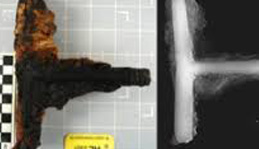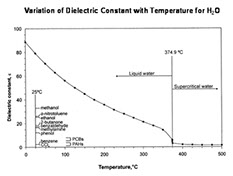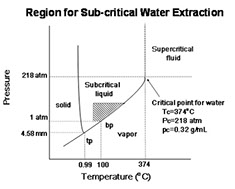Use Supercritical Fluids to Restore Artifacts
The properties of supercritical fluids make it an ideal alternative to traditional artifact restoration techniques. Conventional methods are costly, time-consuming and often damage the artifact.

For restoring metallic objects, use subcritical water. Subcritical water has a higher diffusion rate and a lower viscosity than water under ambient temperatures. Corrosion goes deep into the pores of the metal. Surface tension and viscosity and transport properties become limiting factors with traditional restoration methods.
Subcritical Water Treatment - Results
- Removed very high levels of Cl- from the samples in very short periods of time.
- Dramatically shorter treatment time
- Subcritical water - 5 days
- Conventional - over 6 months
- NaOH or Na2CO3 alone sometimes not effective
- Resulted in the apparent transformation of ß-FeOOH into other iron oxides
- Specimens maintained their physical appearance, mechanical properties
- Maintained their apparent corrosion resistance (even those stored in a saturated water vapor chamber for at least 2 years)
Michael Drews, Professor Emeritus School of Materials Science & Engineering, Clemson University Warren Lasch Conservation Center in Charleston, S.C.
Download the Subcritical Water application:
SFE537 Conservation of Corroded Iron Artifacts Using Subcritical Water

